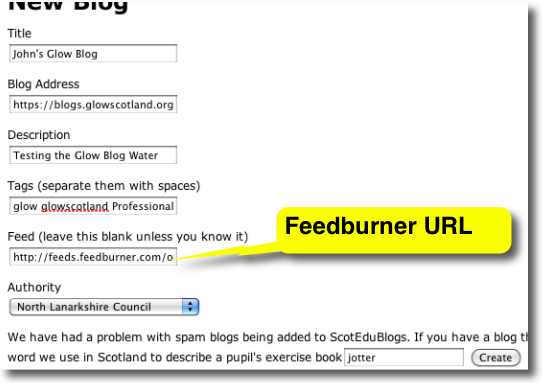
iPad stand by tim_d
Attribution-NonCommercial-ShareAlike License
I was pretty impressed with the iPad 2 which was launched this week. Some nice new features and the speed bumps especially in JavaScript sound good.
I’ve continued to test an iPad and this week I spent a wee bit of time using it to access glow. I’ve talked to a few pupils who access glow at home using an ipod touch, and have occasionally used my iPhone, but find it a bit of a strain on the eyes (The pupils I’ve talked to don’t seem to have the same problem).
On an iPad Glow works pretty well. The iPads limitation on now allowing file (picture) uploads in the browser is a bit of a draw back but a lot of the other feature are fine. Editing webparts works as well as it does on Safari on a mac. The text editor continues to frustrate me but I am resigned to avoiding it use by now.
I successfully posted to my glow blog: iPad Glow blogging without trouble. Again I could not upload photos, but it is easy to workaround using flickr, I used my flickr CC search toy which did the job and sorted the attribution.
The WYSIWYG editor did not work, but I was please to see that the html editor respected line breaks, adding paragraphs. typing <p> with an iPad is a bit slow.
I also tried using the iPad to edit a wiki page. Again WYSIWYG was turned off and this time there was no auto paragraphing. Again I could paste in the embed code for a flickr photo. The font size was a wee bit small for me, but would be fine for most youngsters.
What it would be nice to see would be support for the MetaWeblog API in glow blogs, this would allow the use of various apps to post to a glow blog. I guess it is hard to enable this due to the way glow accounts are matched to wordpress ones through shibboleth, if RM can manage this it would be make glow blogs a powerful tool for mobile learning.
.







